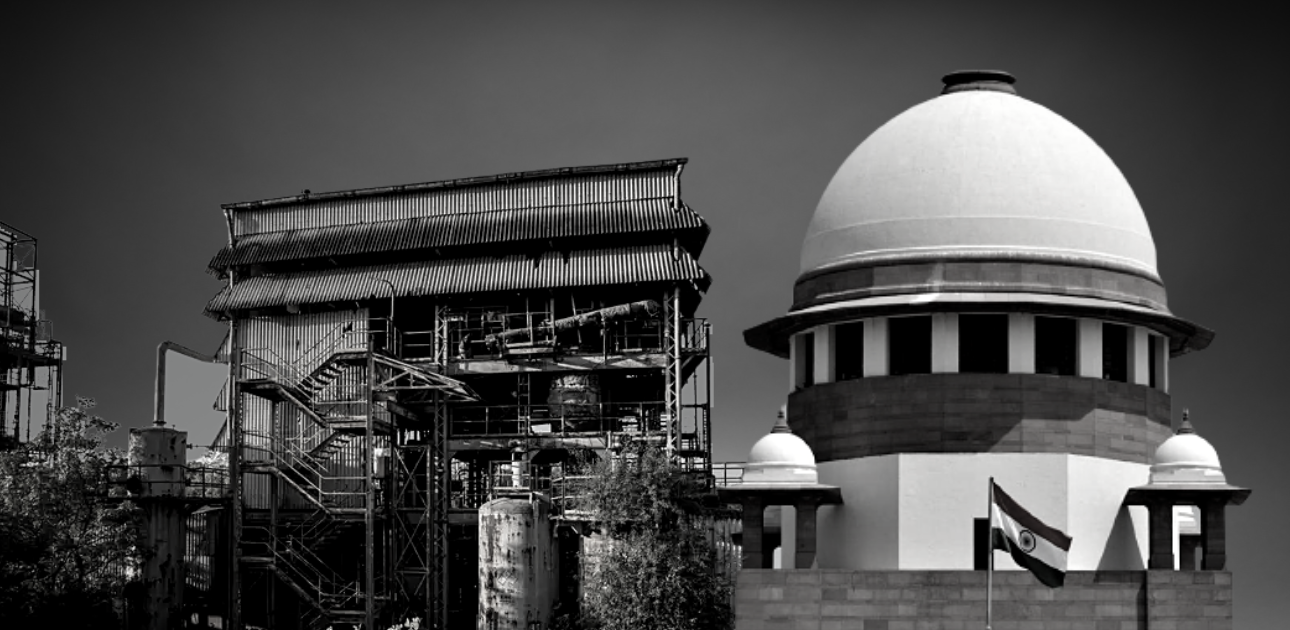The constitution bench asked the Attorney General for India to address if the court can expand the jurisdiction of the curative petition as laid down by the Supreme Court’s five-judge bench in its Rupa Ashok Hurra judgment.
——
ON Wednesday, the constitution bench of the Supreme Court continued hearing the curative petition for additional compensation to the victims of the 1984 Bhopal gas tragedy.
The bench led by Justice Sanjay Kishan Kaul and comprising Justices Sanjiv Khanna, Abhay S. Oka, Vikram Nath and J.K Maheshwari, in a one-of-its-kind case, asked the Attorney General for India (‘AGI’), R. Venkataramani, to take a ‘conscious call’ on whether the Union Government wants to proceed with the curative petition because the court cannot give an ‘indeterminate hearing’.
The bench is not convinced with the AGI’s argument made yesterday that additional compensation could be sought without reopening the ‘full and final’ settlement reached in 1989. However, the AGI, yet again, told the court that the settlement is final in terms of the fact that the Union Government “could not have done better at that point of time”.
In today’s hearing, Justice Kaul remarked that the data put on record by the Union Government does reflect that they could have asked for more compensation, but the settlement remains in its favour.
Further, the bench has asked the AGI to consider the ‘sanctity’ of the Union Government’s settlements, in general, if they do not attain a point of closure. But the AGI, terming this as one of the ‘rare moments’ in the history of this court, urged the bench to continue hearing the matter as it concerns one of the fundamental principles of access to justice.
He said that the Union Government has declared itself as parens patriae of the victims and the court is dealing with a case which did not even have an answer in 1992. So, the AGI, not denying that the set of facts has not changed, requested the court to acknowledge the broader framework in which new circumstances have emerged.
Can we expand the jurisdiction of curative petition, asks Supreme Court
At this juncture, the court even asked about the possibility of expanding its curative jurisdiction. The bench expressed dismay and told the AGI, “You are asking us to try a curative petition like a suit.”
The jurisdiction of the curative petition was dealt with by a five-judge Constitution bench of the court in Rupa Ashok Hurra versus Ashok Hurra & Anr. (2002).
The Supreme Court, in Rupa Ashok Hurra, observed that a curative petition ought to be treated as a rarity and can only be considered, upon proper circumspection, in cases where “the order [is] in contravention of the doctrine of natural justice or without jurisdiction or in the event of there [being] even a likelihood of public confidence being shaken by reason of the association or closeness of a judge with the subject matter in dispute”.
To make this preliminary point on whether the curative jurisdiction can be expanded, the AGI referred to the English judgment of Ashby versus White (1703) to state that where there is a right, there is a remedy. Further, addressing the court’s concern about the lack of precedent, he told the court that the entirety of common law would not have been established if the court were to always look at the existing precedent. That is why, he argued, constitutional courts are known as ‘deliberating courts’ as they are able to address unforeseeable cases.
Then, the AGI, specifically referring to the Rupa Ashok Hurra, told the court that the grounds were not ‘exhaustive’ of any other appealing reasons which may persuade the court to continue to do complete justice under Article 142 of the Constitution.
Welfare duty of the State must not be linked to the liability of UCC, Attorney General submits
Justices Oka and Kaul recommended the Union Government pay the victims in its welfare capacity. But there is great difficulty for the court to do that in the curative petition, the bench expressed.
But the AGI said, “…we have paid the 2010 ex-gratia…to the extent the Government of India should discharge their responsibility…this is wholly unconnected to the question of [Union Carbide Corporation]’s liability…that question ought not to be linked with the question of welfare State intervention to undo the miseries of the victims.”
Facts also before the 1991 bench, why claim compensation now, asks Supreme Court
Further, Justice Maheshwari pointed out that the set of facts relied on by the AGI in the present hearing was on record during the 1991 review. Referring to the review judgment which stated, “ While it may not be wise or proper to deprive victims of the benefit of the settlement, it is however, necessary to ensure…event of the settlement fund being found inadequate to meet the compensation determined in respect of all present claimants, those persons who may have their claims determined after the fund is exhausted are not left to fend themselves,” the AGI pointed out that the determination of the claims was in regards to the ‘present claimants’ at that point of time.
The review judgment held, “But, such a contingency may not arise having regard to the size of the settlement-fund. If it should arise, the reasonable way to protect the interests of the victims is to hold that the Union of India, as a Welfare State and in the circumstances in which the settlement was made, should not be found wanting in making good the deficiency”. The AGI has challenged this principle in the curative petition.
The court will continue hearing the matter.


